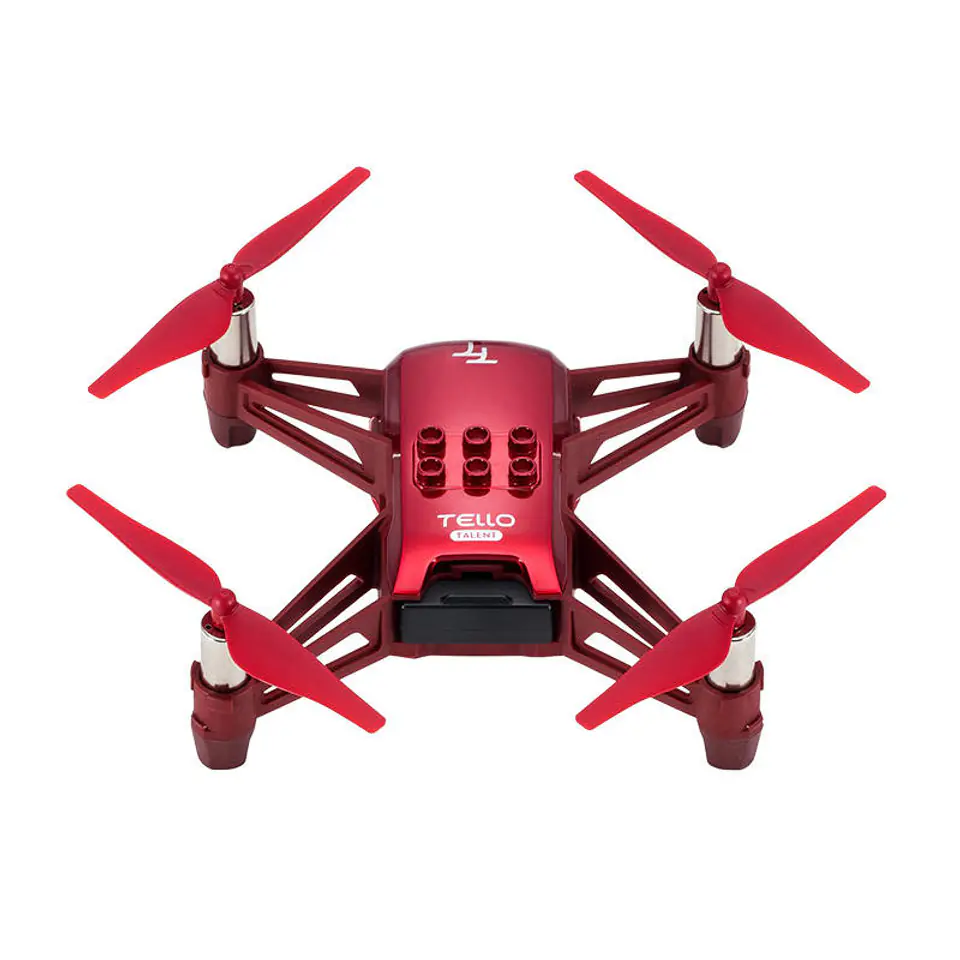DJI Robomaster TT Tello Talent is the perfect solution for students and teachers - it helps to bring issues related to robotics and artificial intelligence closer. The open source ESP32 module allows you to program the device and supports platforms such as Arduino or Micro Python. The Robomaster TT is also equipped with a 5MP HD camera. A plethora of AI features, easy handling of multiple drones, a range of available courses and engaging competitions - all this helps to arouse students' interest in programming, lowers the threshold for entry into robotics issues and stimulates creativity!
Excellent flight performance, compact size and advanced DJI algorithms for flight safety - these are just some of the advantages of the DJI RoboMaster TT. The drone also has a built-in 5MP HD camera for users to take clear, detailed photos. What's more, the newly added ESP32 open source module and other programmable modules combine with diverse development environments to create a professional learning platform – ideal for both students and teachers.

The drone is equipped with a programmable RGB LED indicator and a red-blue 8x8 LED dot matrix. Thanks to this, you can customize its appearance to your liking and get even more interesting visual effects! Using graphical programming, Arduino, Python and more, you can adjust the color and frequency of the pointer. There is also an option to display simple images, letters or animations on the matrix - the possibilities are almost endless.
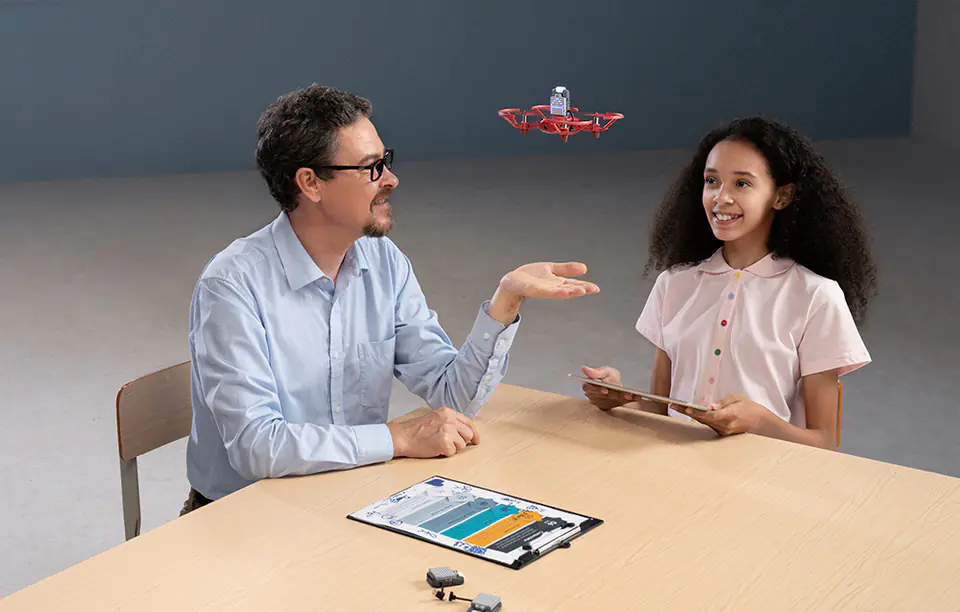
Learning to program has never been more enjoyable. RoboMaster TT is equipped with the open source ESP32 module, which allows you to use graphical programming, Arduino, Micro Python and other environments. However, this is not the end of possibilities! The new RoboMaster SDK based on the Python 3.0 programming language makes it easier to learn the language by creating drone control programs. You can also use the SDK to work on your apps, implement interactions between DJI RoboMaster TT and DJI RoboMaster EP, develop your own AI algorithms, and more!
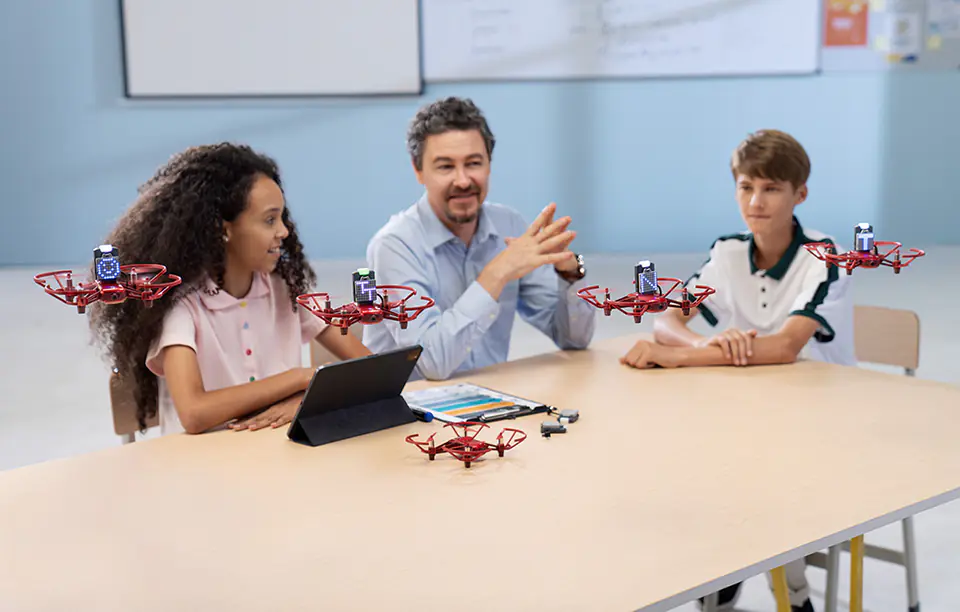
The device has been equipped with an advanced ToF sensor, which is distinguished by a measuring range of up to 1.2 m. Thanks to this, the drone can intelligently detect and avoid obstacles - perfect for various scenarios of classes. In addition, the new Wi-Fi module supports communication in 2 bands - 2.4 GHz and 5.8 GHz, which significantly increases the stability of the connection. It also makes the RoboMaster TT better suited to different environments and ensures smooth flight even in complex Wi-Fi environments. You can also connect more drones at the same time without worrying about transmission problems.

The RoboMaster TT also offers a special adapter that can be used to connect various sensors from other manufacturers. It provides a 2x7-pin 2.54mm interface and a 5V/3.3V power source. There is also an official DJI SDK developer toolkit that supports protocols such as I2C, SPI, UART and GPIO. This means students can easily add new sensors, extend them, create programs and develop AI applications. DJI RoboMaster TT gives you room for creativity!
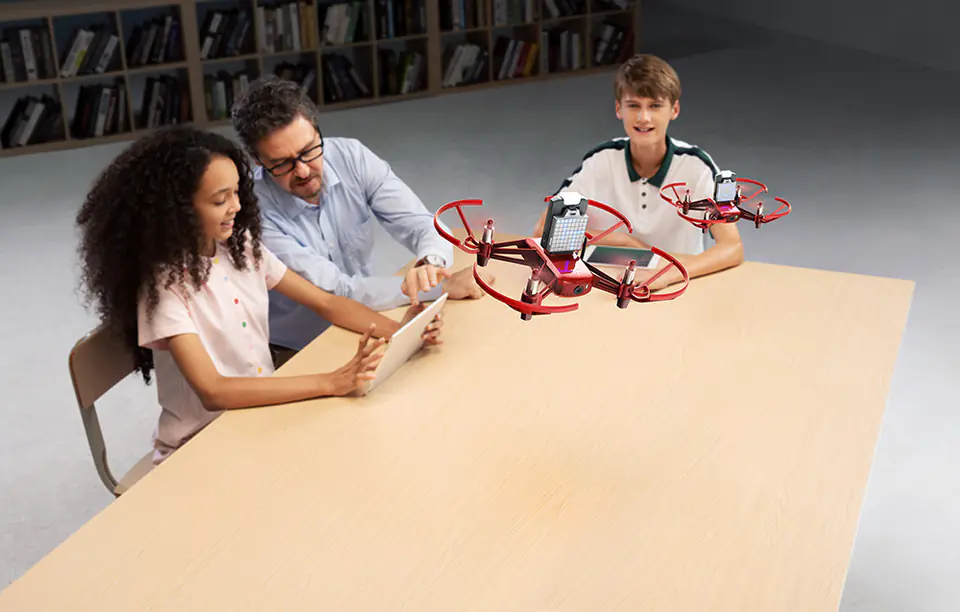
With the help of various types of additional sensors, you can increase the functionality of the drone and use artificial intelligence algorithms. For example, infrared distance measurement and obstacle detection allow you to learn how to navigate rooms and create maps of them. RoboMaster TT can also recognize faces and follow objects, making it easier to learn machine learning, deep learning, and convolutional neural networks. It is also possible to program the drone in such a way that it responds to gestures and hand movements (sensors available for purchase separately are necessary). This makes it easier to learn microelectronics and sensor characteristics.
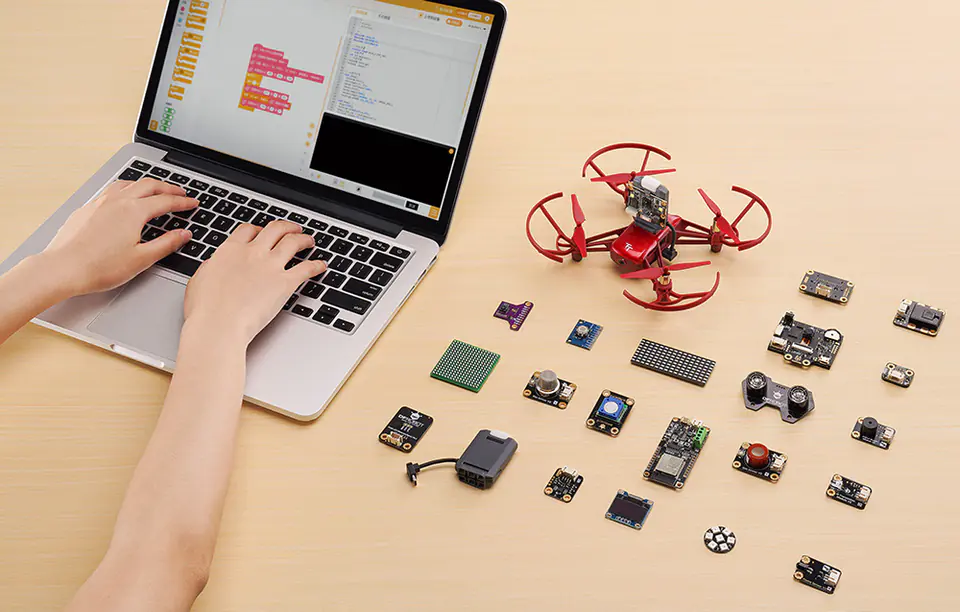
RoboMaster TT supports Station mode. This means you can connect more drones to a single Wi-Fi router and conveniently control them and even sync their movements. For example, it is possible to program several devices or configure them using an application. Programmable dot matrix, indicators, LED, music and specific actions - all this will allow you to get even more interesting effects when working with swarms of drones. The RoboMaster TT also ensures flight safety with propeller guards, precision hover and low-battery notifications.
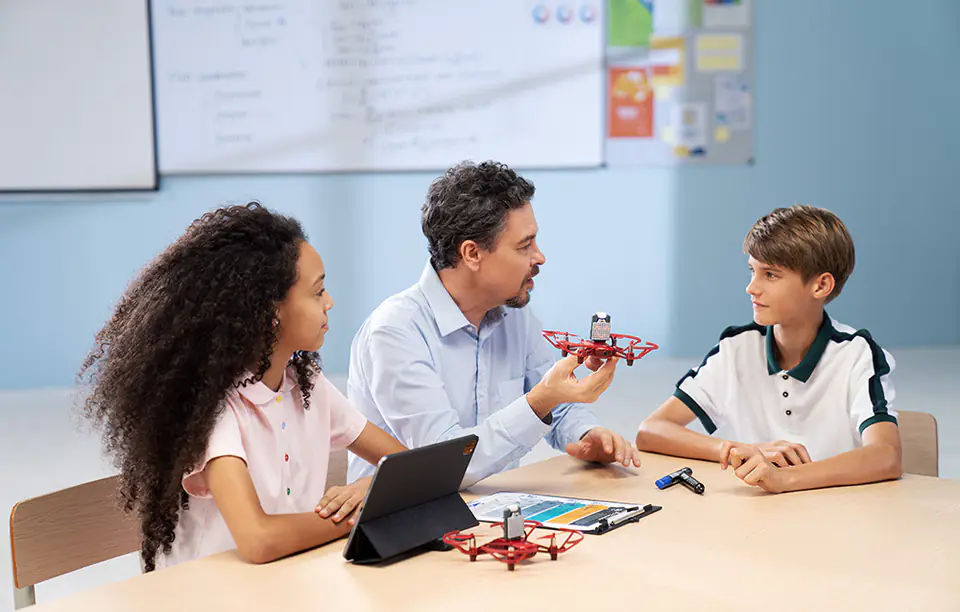
DJI RoboMaster TT also allows you to test your acquired skills in an interesting way through various tasks. The AI competition requires programming the drone in such a way that it automatically bypasses obstacles and lands in a specific place. In this way, students learn issues in the field of image recognition. During Air-to-Ground Operation, the RoboMaster TT conducts reconnaissance and transmits information to an unmanned vehicle, which then heads to the indicated location and transports materials. Racing in the maze involves writing a program that will allow the drone to automatically find the way out of the maze with additional, hidden tasks.

- Drone (with propellers and propeller guards)
- Spare propellers x2 (pair)
- Educational mat
- Micro USB cable
- Accumulator
- Propeller dismantling device
- Quick Start Guide
- Open Source Controller
- Point matrix with distance sensor
- Expansion module
| Producer | DJI |
|---|---|
| Name | DJI RoboMaster TT Tello Talent |
| Take-off weight | 87 g (including propellers, propeller guards and battery) |
| Dimensions | 98 x 92.5 x 41 mm |
| Propeller shovel | 3'' |
| Features | Infrared altitude, barometer, LED indicator, bottom vision, Wi-Fi, HD 750p |
| Charging interface | Micro USB |
| Max. Flight distance | 100 m |
| Max. flight speed | 8 m/s |
| Max. flight time | 8 mins *Max. flight time without any additional accessories. After installing the expansion accessories, the flight time is up to 8 minutes and 30 seconds. |
| Max. ceiling | 30 m |
| Power | Replaceable 1.1Ah / 3.8V battery |
| Camera resolution | 5 MP |
| Fov | 82,6° |
| Video | HD 720p 30 |
| Photo format | .JPG |
| Video format | .MP4 |
| Electronic image stabilization | Supported |
| Scales | 12.5 g (including controller and dot matrix display) |
|---|---|
| Dimensions | 49.5 x 32 x 15.2 mm |
| Operating modes | AP & Station |
| Wi-Fi frequency response | 2.4 GHz and 5.8 GHz |
| Bluetooth | 2.4 GHz |
| MCU | ESP32-D2WD, 2-core, 160 MHz, 400 MIPS |
| Open Source | Supports SDK, Arduino, graphic programming and MicroPython programming |
| Scalability | Extended 14-pin interface (for I2C, UART, SPI, GPIO, PWM and power source) |
| Programmable LED indicator | Full-color LED |
| Dimensions | 35.3 x 31.5 x 8.6 mm |
|---|---|
| Programmable dot matrix LED indicator | 8x8, red-blue indicators |
| Point matrix features | IIC interface, automatic dot matrix scanning, 256-degree full matrix brightness adjustment, 256-degree single LED brightness adjustment |
| Measuring module | Infrared distance sensor (ToF) |
| Max. Measuring range | 1.2 m (indoor, white objects) |
| DIY adaptation | Extended 14-pin to 2x7-pin interface 2.54mm in-line pad, 2 power indicator positions, 2 debug indicator positions |
|---|

